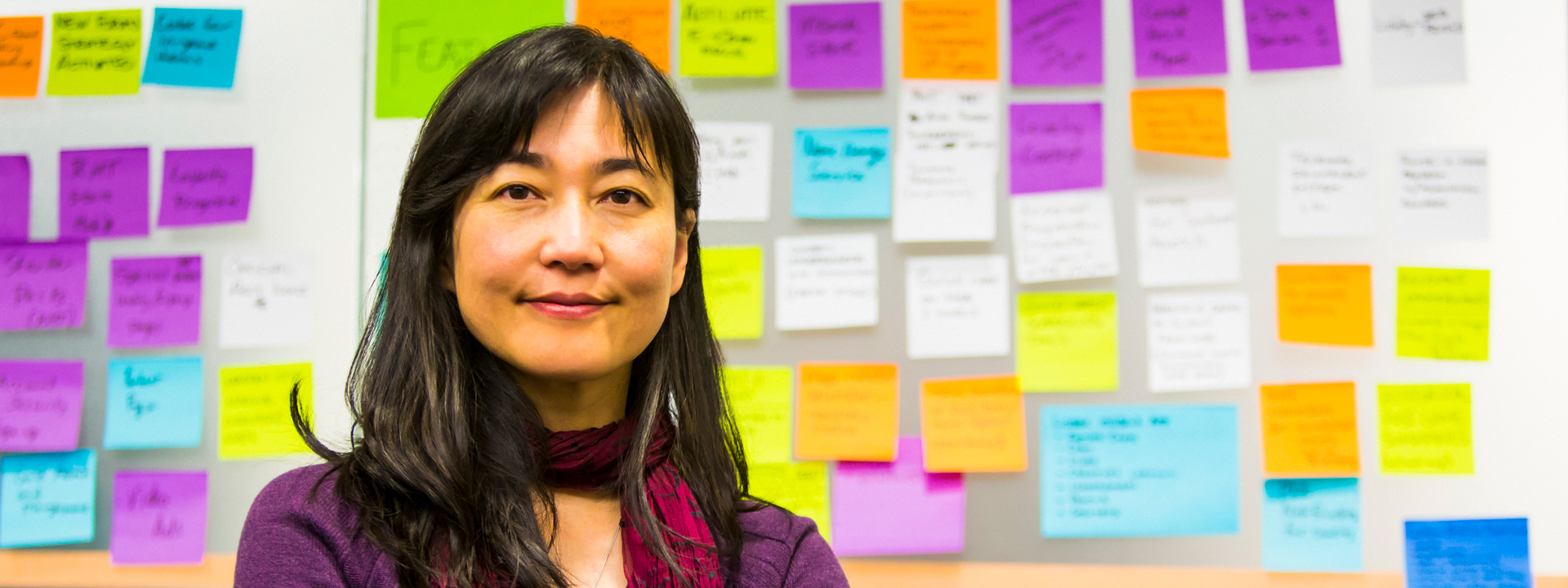Latest News
Drawing Inspiration from Stories in Asia Pacific: Training 1 Million Women and Girls in the Region

Empowering women and girls to succeed in STEM studies and careers has long been one of my goals. I think it all started when I became an engineer and I didn’t encounter many women in the field.
Empowering women and girls to succeed in STEM studies and careers has long been one of my goals. I think it all started when I became an engineer and I didn’t encounter many women in the field. Over the years I have become increasingly interested in creating opportunities through better and more equitable education. In my current role, I have the opportunity to take a stand and drive real progress on this issue. This is key because the absence of women in the tech field is not just something I’ve experienced firsthand, it is a widespread issue. Globally, women make up just 28% of graduates in engineering and 40% of those in computer sciences – skills vital for well-paying jobs that offer good work/life balance.
That’s why is important for me to be part of today’s discussion at the Indo-Pacific Economic Framework in Los Angeles, where IBM pledged to train 1 million women and girls in the region over the next five years. This is another big moment on IBM’s path to skills 30 million people globally by 2030, and another major milestone on this personal goal as a woman in STEM. But for me, it is also a time for reflection on the underlying challenges and the stories of success that empower us to keep pushing the needle.
Let’s start with the challenges. UNESCO has noted “the underrepresentation of women in STEM careers in Asia Pacific has far-reaching implications, and that the exclusion of female professionals signifies a loss of ideas, perspectives and talent.” I completely agree. But this is not only about numbers. A more diverse STEM workforce with greater female representation is more creative, cohesive, and profitable. And a greater number of skilled professionals, by mentoring and setting the right example, can help bridge the persistent skills gap that has left many STEM jobs unfilled. How can we change the paradigm? I think there’s no simple answer, but my team and I believe that with IBMers’ passion and the right partnerships, we are capable of helping change the lives of women and girls.
What inspires me the most are the stories of individuals who have faced challenges but benefited from our work. For example, Navya, a young student in India, thought she couldn’t pursue STEM because of her shyness and her household chores. Thanks to an inspiring math teacher and our STEM for Girls initiative, Navya is well on her way to becoming a math teacher herself!
Another great example is Tejashwini, a 10th standard student from Saroornagar Govt school in Kothaguda. She is the first generation girl student from her family who is interested in science and wants to pursue a career in space. Her idol is Neil Armstrong and she wants to be the first person to step on Mars. As the daughter of a farmer and a homemaker, Tejashwini had no exposure to the kinds of careers available to women like her through STEM. Through coding classes, participation in hackathons, and career conversations, she now has an ambitious plan to fulfill her dream.
Meanwhile in Japan, a working mother named Chika invested in her learning through IBM SkillsBuild during her third pregnancy and maternity leave. She returned to work after leave and was quickly promoted to a managerial role thanks to the workplace skills she gained which boosted her confidence. As a working mother myself – who works with many other working mothers – I know this is no easy feat and I admire Chika’s passion and drive!
Stories like this inspire us to continue the work we’re doing all across Asia Pacific through partnerships and initiatives that are making a real difference in people’s lives. For example, in Indonesia, IBM has already helped train more than 2,600 University students through the Digital Talent scholarship program. In Taiwan, IBM is training 20,000 young Taiwanese women, who spent 22,000 hours using IBM SkillsBuild, and we are connecting them with peers across countries who share their passion for STEM. Earlier this year, IBM announced a collaboration with UNCDF to deliver digital and workforce skills to women across Africa, Asia, and the Pacific.
Last, but not least, this could only be possible through the inspirational work of IBMers across the region. For example, in India, IBMers have provided mentorship over the last several years to 230,000 middle and high school girls across more than 1,850 government schools in 13 Indian states.
This is a critical moment for inspiring and equipping women around the world with the resources they need to pursue a career in STEM, which can offer a unique opportunity for social and economic advancement. Women and girls like Chika, Tejashwini and Navya remind me why our work is so vital and illustrate the impact we can have when we collaborate and invest in education. I hope they more women and girls will be soon in good company with fellow STEM enthusiasts and future space explorers!